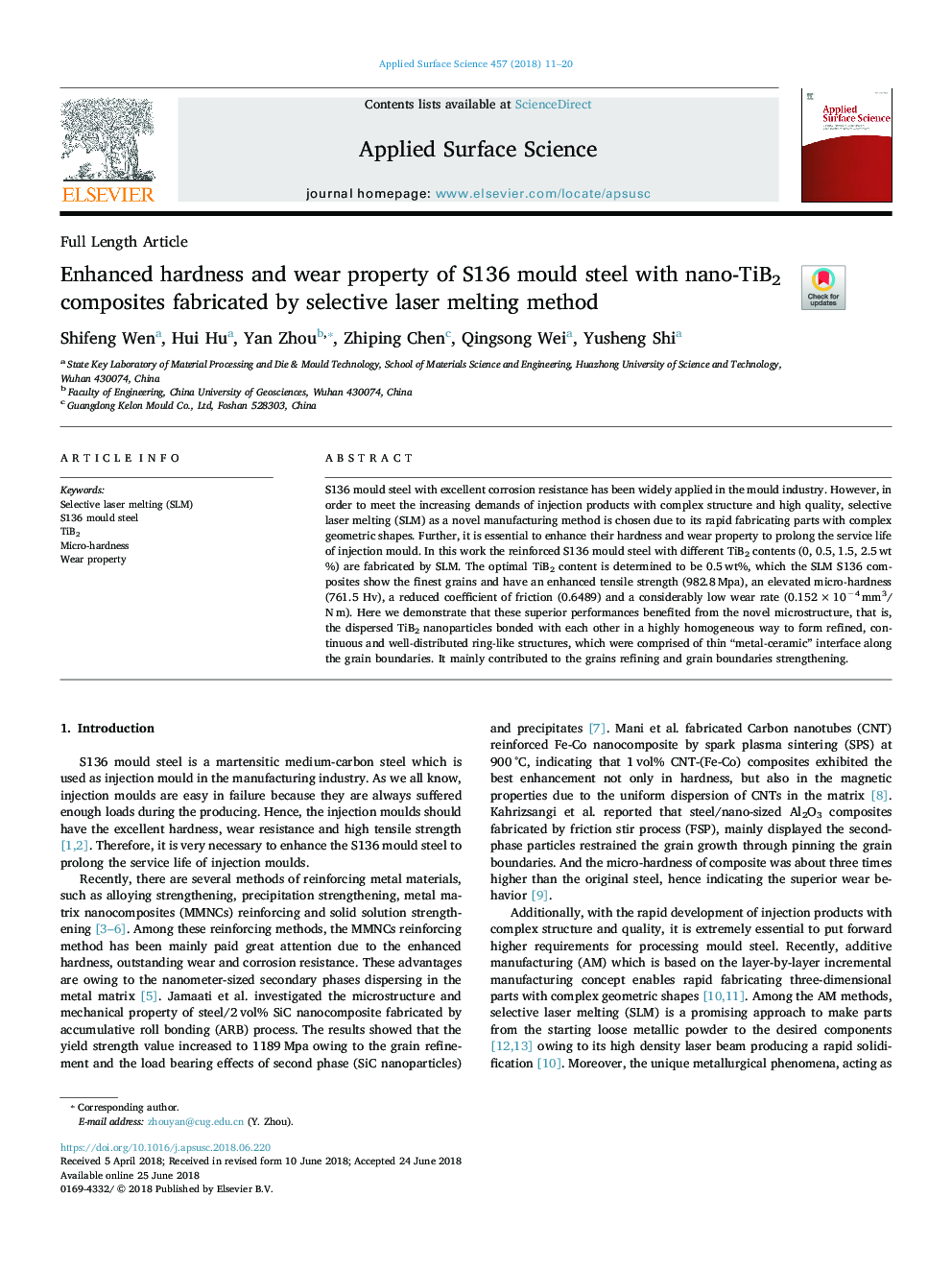| Article ID | Journal | Published Year | Pages | File Type |
|---|---|---|---|---|
| 7832860 | Applied Surface Science | 2018 | 10 Pages |
Abstract
S136 mould steel with excellent corrosion resistance has been widely applied in the mould industry. However, in order to meet the increasing demands of injection products with complex structure and high quality, selective laser melting (SLM) as a novel manufacturing method is chosen due to its rapid fabricating parts with complex geometric shapes. Further, it is essential to enhance their hardness and wear property to prolong the service life of injection mould. In this work the reinforced S136 mould steel with different TiB2 contents (0, 0.5, 1.5, 2.5â¯wt%) are fabricated by SLM. The optimal TiB2 content is determined to be 0.5â¯wt%, which the SLM S136 composites show the finest grains and have an enhanced tensile strength (982.8â¯Mpa), an elevated micro-hardness (761.5 Hv), a reduced coefficient of friction (0.6489) and a considerably low wear rate (0.152â¯Ãâ¯10â4â¯mm3/Nâ¯m). Here we demonstrate that these superior performances benefited from the novel microstructure, that is, the dispersed TiB2 nanoparticles bonded with each other in a highly homogeneous way to form refined, continuous and well-distributed ring-like structures, which were comprised of thin “metal-ceramic” interface along the grain boundaries. It mainly contributed to the grains refining and grain boundaries strengthening.
Related Topics
Physical Sciences and Engineering
Chemistry
Physical and Theoretical Chemistry
Authors
Shifeng Wen, Hui Hu, Yan Zhou, Zhiping Chen, Qingsong Wei, Yusheng Shi,
